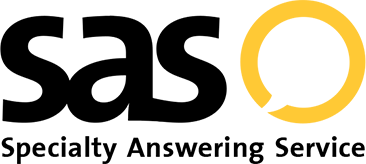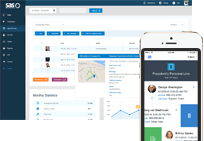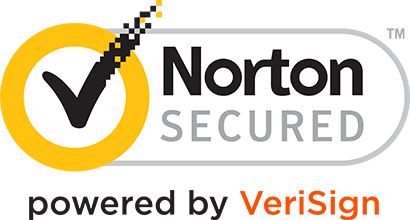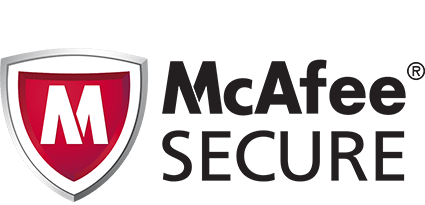- Log In
- Support
- Company
- Contact Us
- Live answers @ 1-888-532-4794
58 Terms You Need To Know When You’re New To Answering Services
When you’re new to outsourcing, it can feel like you’ve walked into a conversation where everyone knows what they’re talking about but you. If you’re dealing with an answering service support rep or navigating our web portal, there’s a whole new set of terms and phrases you may be exposed to. While you may not be up on the lingo, we’ve created a simple glossary as a resource to help you out – 58 basic terms you’ll need to know as you interact with your answering service. Bookmark this post, study often, and you’ll be feeling like a pro in no time.
- Abandoned Call: When a caller hangs up before any conversation happens with the operator.
- Answering Service: An answering service is a type of service that can manage both inbound and outbound business communications for various industries. Often times used by doctors, laywers, and HVAC companies, among others.
- Application Program Interface (API): API is a way for customers to access specific parts of a software program to build other software applications.
- Auto-Attendant: An auto-attendant is a computerized virtual assistant that allows a caller to assist themselves using their keypad or voice. See “IVR (Interactive Voice Response)”
- Automatic Call Distributor (ACD): ACD is a system that receives incoming phone calls and routes them to the appropriate destination or distribution. For example, if a business has an IVR on their line for callers to press 1 for English or 2 for Spanish, the ACD system would distribute those calls to the appropriate extension.
- Automatic Number Identification (ANI): ANI is a service that provides the Caller ID of an incoming call.
- Automatic Speech Recognition (ASR): ASR is a system that lets callers speak their selections instead of punching in numbers on their keypad. For example, when an automated recording asks the caller to “please say the name of the person you wish to speak to.”
- Average Handle Time: The average amount of time it takes for an operator to answer a call (including hold time) and do everything that needs to be done with the caller. This includes the time the caller is on the line, plus any tasks the operator must do after the call ends (reaching out to the on-call, filling out a form, etc.)
- Average Wait Time Before Abandon: The average time a caller waits (while being on hold) before hanging up.
- Bidding, Submitting a Bid: RFP’s and RFQs (see below) are often connected to sales leads with a “bidding process”. This is where a company/organization will consider at least a few different call centers’ proposals, looking at things like price, experience/history of the company, capabilities and other factors.
- Blended/Shared Agent: A blended or shared agent is a call center operator that is answering calls for many different companies.
- Call Center: A call center is sometimes an interchangeable name for an answering service. They usually employ a large amount of operators and can handle a high volume of phone calls. In addition, they are usually able to accommodate more advanced call handling protocols like appointment scheduling and order placing.
- Call Hunting/Line Hunting: When an inbound call rings at one destination a few times, then at another if unanswered at the first location, and so for. For example, someone might have a number ring to their office four times and if there is no answer, it will then ring to their answering service.
- Call Log: Records of interactions between call center agents and callers.
- Call Paths: Within a script, you can usually set up multiple call paths that allow the operators to select different call reasons. For example, you could have a path for appointments, a path for billing, a path for emergencies, and a general path for all other calls.
- Cold Patch/Transfer: During a cold patch or a cold transfer, the operator would blindly transfer the caller through to the designated number, without checking if someone is available first.
- Cross-sell: Selling an additional product or service to a customer at the time of sale. For example, an operator taking orders from a non-stick frying pan infomercial might try to cross-sell a set of non-stick mixing bowls as well. It’s almost always a related or similar product.
- Customer Relationship Management (CRM): CRM is a software that allows businesses to manage all of their client data. There are many CRMs on the market, and sometimes answering services can integrate with one or multiple different CRMs.
- Customer Service Representative (CSR): CSRs can also be known as operators, virtual receptionists, agents, etc.
- Dedicated Agent: A dedicated agent is a call center operator that is only answering calls for one particular company.
- Dialed Number Identification service (DNIS): DNIS allows a user to determine which telephone number was dialed by a customer. This feature allows answering services to determine how to handle an inbound call (i.e, which account and script should be pulled up based off the number that the call is coming from).
- Direct Inward Dialing (DID): DID is a number that is attached to an incoming phone line. Call centers can identify which incoming calls are for which clients based on the dialed DID.
- Dispatch: Dispatching is another name for reaching out to the on-call personnel.
- Do Not Disturb (DND): DND is a function on most office phones. When activated, incoming calls are unable to ring on that particular phone. When a call comes in for a phone that is set to “do not disturb”, many office phone systems will automatically transfer the caller to another destination, such as a call center.
- Email Response: Responding to emails is a type of service that some answering services provide instead of or in addition to handling incoming phone calls.
- First Call Resolution: When an operator is able to handle what a caller needs the first time they call, eliminating the need for them to call a second time.
- Forwarding/Call Forwarding: Forwarding your phone line allows you to send all of your calls to another number. It is a feature that is controlled by your phone provider and can be done in several different ways. For example, you can forward all of your calls to another number immediately, you can forward your calls if your own line is ringing busy, or you can forward if you don’t answer within a certain amount of rings or seconds. Typically you would dial *72 on the phone you are wanting to forward, followed by the number you wish to forward to.
- Free Trial: A free trial is what an answering service may offer potential customers to try out their service for free to see if it would be a good fit for their business.
- Frequently Asked Questions (FAQs): FAQs should be added to every account so the operators can help callers answer basic questions that may come up. Some common FAQs could include your business hours, your location, your business name and concept, and any services/products you provide and/or sell.
- Grasshopper: See “Hosted/Virtual PBX”
- Help Desk: A help desk is a service that provides information and technical support to users. Some answering services can act as a help desk for a business by answering questions and troubleshooting basic issues.
- Hosted/Virtual PBX: A system that uses an off-site PBX system, provided by a company like Grasshopper. With this kind of service, the user forwards their phone number to Grasshopper. When callers dial the number, a pre-recorded message greets the callers and asks them to dial extensions set up by the company. If an extension isn’t available, it can be setup so that the caller is transferred to an answering service instead.
- Interactive Voice Response (IVR): IVR allows the caller to press different options on their keypad to be directed to different numbers. For example, and IVR would allow a caller to press 1 for English and press 2 for Spanish. Some IVRs also allow the caller to speak into their phone to request different options instead of manually pressing a number.
- Live Answer: Live answer means that a live person is answering your calls instead of a robot or a voicemail.
- Longest Delay Queue (LDQ): The longest time a caller has to wait in a queue before being connected with an operator or hanging up.
- Message Ticket: A Message Ticket is a general message that the operator takes.
- OpID: OpID is a shortened name for Operator ID. Each call center operator is assigned a specific ID number. This comes in handy when calls need to be reviewed for quality assurance.
- Overflow: People might use an answering service when they get too many calls for their office staff to answer, choosing to have the excess (overflow) calls automatically go to an answering service.
- Patching: Connecting a phone call to another destination, such as when an operator patches a caller to someone in an office.
- Private Branch Exchange (PBX): PBX usually refers to an office’s telephone system which connects individual phones to both each other and to the public telephone network.
- Perfect Greeting: A perfect greeting is a recorded message that plays prior to an operator getting on the phone. Usually the recording would say something like: “Thank you for calling ABC Plumbing, we’ll be with you in a moment. For quality assurance this call may be recorded.” However, they can usually be customized accordingly.
- Portal: Most answering services offer an online portal where you can log into view your messages, update your call handling, download reports, etc.
- Queue: Queue is the time spent when a caller is waiting for their call to be picked up. It is also the time spent in between on-call dial outs. For example, a company may want their answering service to call the first on-call tech, then wait 5 minutes before going to the next tech. The 5 minute interval would be considered a queue.
- Reach On-Call: After a call is disconnected, the operator would reach out to the designated on-call personnel a pre-programmed number of times. Usually operators can reach out indefinitely until someone answers, since the caller is no longer on the line. This is different than a transfer because after the operator reaches the on-call, they relay the message and disconnect. The on-call personnel would then have to call the person back on their own.
- Request for Proposal (RFP): RFP means a customer is wanting their service provider to submit formal written proposals.
- Request for Quotation (RFQ): RFQ means a customer wants a written price estimate for service that meets their requirements.
- Script: Similar to a script in a play, a call script is what the operators read off of to handle your calls and can usually be customized per your business needs.
- Session Initiation Protocol (SIP): SIP is technology used for controlling VoIP communications.
- Simultaneous Ringing: Similar to call hunting, but instead of going from one location to the next until answered, the call rings simultaneously at all phones at the same time.
- Trouble Tickets/Issue Tracking System: Software that allows companies and their help desk operators to record problems reported by callers and follow them until they are resolved. For example, an operator answering for an IT company might “open a trouble ticket” when someone calls in complaining that their network is down.
- Trunk: The physical phone “lines” that come into a call center. The number of trunks a call center has available affect things like availability and hold times.
- Unified Communications: Organizing and consolidating the many different kinds of communication (phone, fax, email, instant messaging, etc.) so that someone can contact you at any time, using any method. For example, someone might not be able to take a phone call because they are in a meeting. A Unified Communications solution might include having an operator take their calls during this time and send messages via email.
- Up-sell: Selling a higher-end product or a larger quantity of a product at the time of sale. For example, when taking and order for a regular “vodka tonic”, a bartender might try to up-sell the customer on getting a “Grey Goose and tonic” (a better quality – and more costly – brand than regular vodka).
- Virtual: Having the features or qualities of something that isn’t real in a physical sense.
- Virtual Receptionist: Usually virtual receptionists are performing the same tasks as answering services, so these terms often refer to the same thing.
- Voice over Internet Protocol (VoIP): VoIP allows a user to make or accept phone calls via the internet, and not through a phone provider. Vonage, RingCentral, 8×8, OnSIP, BroadVoice, XO Communications, Broadvox and Lingo are all examples of VoIP providers.
- Warm Patch/Transfer: During a warm patch or a warm transfer, the operator would place the caller on hold when trying to patch them through. If the person on the other end is available to speak, the operator would introduce the caller, transfer them through and then disconnect.
- Web/Live Chat: Live chat is a system in which clients can chat with customer support via the internet. Some answering services offer live chat in addition to inbound and outbound call handling.
Categories
- Advice (32)
- Answering Service 101 (18)
- Best Practices (10)
- Call Center Jobs (6)
- Call Center Software (20)
- Comparison (2)
- Customer Service (30)
- Funny (31)
- Holidays (19)
- Industry Hacks (19)
- Infographics (53)
- International (1)
- Medical (8)
- News (12)
- Phone Etiquette (2)
- Phones (14)
- Pricing (8)
- Quizzes (3)
- Receptionist (11)
- SAS Products (29)
- Scripting (4)
- Services (5)
- Small Business (25)
- Starting Up (7)
- Tips and Tricks (19)
- Uncategorized (1)
- Videos (19)
- Workplace (6)
Recently writen
- Call Center Script Best Practices: Advanced Script Block Tips to Optimize Your Answering Service
- January 2025 Release Notes – Adjustments to Call Details Timeline, New Scripting Updates, Live Transcription, and more!
- April 2024 Release Notes – Voicemail Greetings, Ability to Access Websites With a Username and Password, and more!
- March 2024 Release Notes – New Add-On, Settings Revamp, and more!
Follow Us
How about a demo?
We'll show you how our web portal works and answer any questions you have about SAS.
Schedule a demo







